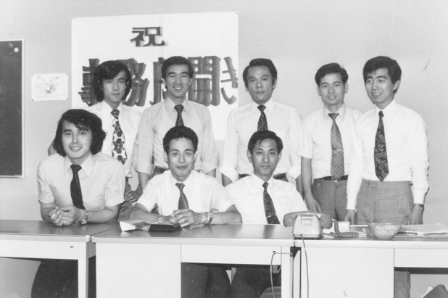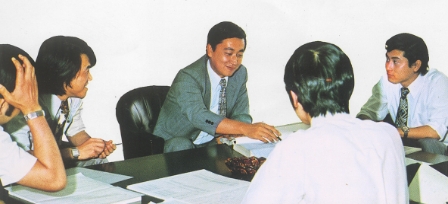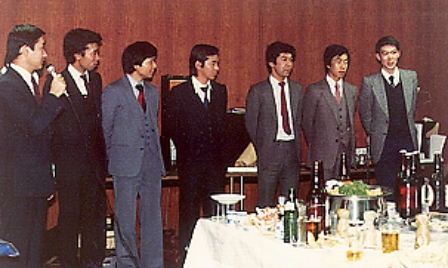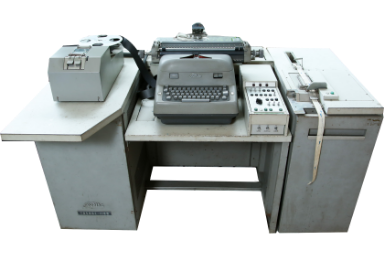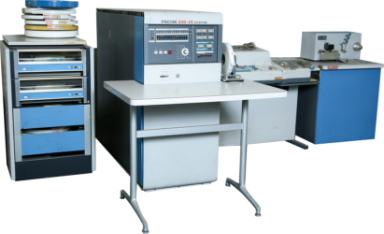history

Timeline Evolution of DTS and IT
DTS has grown along with the development of society.
Here we chronicle the growth of DTS over the past 50 years along with the progress in the computer and IT industries.
In order to make the history of DTS easier to understand, the chronological list is shown according to time periods since our foundation. This may cause some discrepancies between the items shown in the decades of the menu.
1972-1982Founded with aspiration
Earnings growth due to the flourishing of mainframes and the second online shift of the financial system
DTS’s predecessor DATA TSUSHIN SYSTEM CORPORATION was founded in Nishi-Shimbashi in the early 1970s, when computers called mainframes started playing a major role in society. The company consisted of nine members and the president, Toshio Sasanuki, and the three basic pillars of financial systems development, communications systems development, and operations became the basic management policy. The financial industry was undergoing the second wave of shifting to online operations, which involved integrating accounting systems that had been built for each accounting item. We also accepted many large bank-related projects at this time. Our business expanded rapidly as it played a major role in the development of the financial industry.
This is what happened in the 1970s
-
History of DTS
1972
Foundation in August 1972
DTS was originally founded in August 1972 as DATA TSUSHIN SYSTEM CORPORATION, and started with nine elite members mainly from the former Nippon Telegraph and Telephone Public Corporation under the leadership of then President Sasanuki. Everyone was so dedicated to their work that they were called “programmers by day and operators by night,” and even clients sometimes gave accolades.
Starting with system development and operations for Nippon Telegraph and Telephone Public Corporation, we soon received contracts from companies in a variety of industries. We expanded our customers mainly in the banking and communications industries.Office opening
-
From 1979
Achieved one billion yen in sales and debt-free operations
We became debt-free in 1979, and achieved eight consecutive years of profitability in 1980, with sales exceeding one billion yen.
By 1982, 10 years after our foundation, we had grown to 200 employees and 24 million yen in share capital from an initial amount of 3 million yen.Founding anniversary ceremony
This is what happened in the 1970s
-
IT Industry
This is what happened in the1970s
The second wave of shifting to online operations was progressing at financial institutions. A comprehensive online system was reconstructed, which linked and processed the accounting systems that had been previously constructed for each account.
In 1973, the Data Telecommunications System of All Banks in Japan began operating. A system connecting financial institutions online was started.
In 1971, restrictions on the use of specified telecommunication lines for data communication were removed, and in 1976, the restrictions on information processors using the same lines were greatly eased, leading to the shift to online operations.General-purpose equipment in use at the time.
OKITAC-4300C (left) and TOSBAC-1100D (right)Photograph provided by KCG Computer Museum, Kyoto Computer Gakuin
-
Computers
This is what happened in the1970s
In 1971, six domestic computer manufacturers were reorganized into three groups under the guidance of the Japanese national government in order to promote the development of Japanese machines.
Around 1978, Japanese language support was enhanced through various technological advancement, including the establishment of the JIS Kanji code (JIS C 6226), the development of the first Japanese-language word processor by Toshiba “JW-10” and the high-speed Kanji printer (LP15000) device by Nippon Telegraph and Telephone Public Corporation.Photograph provided by KCG Computer Museum, Kyoto Computer Gakuin
-
Development
environmentThis is what happened in the1970s
In the 1970s, assembly languages such as FORTRAN and COBOL that were used for general-purpose machines were mainly employed in the development field. In addition to these, we mainly used languages including PL/PL1 and various data communication macros.
Meanwhile, the C programming language emerged as a new programming language, and is still widely used today.
The BASIC programming language also came out in the 1960s, and was ported to and used in 8-bit personal computers in the 1970s.




